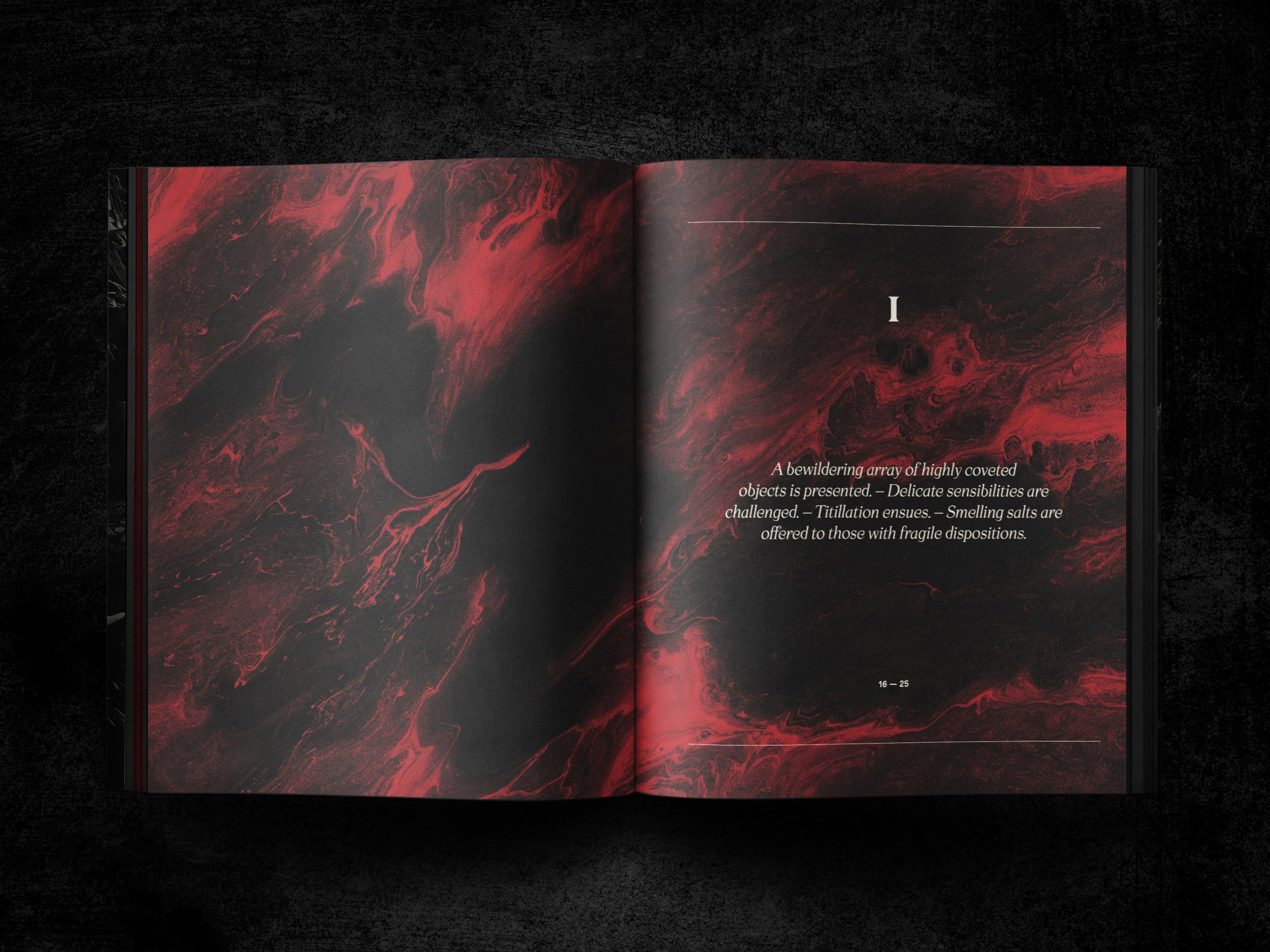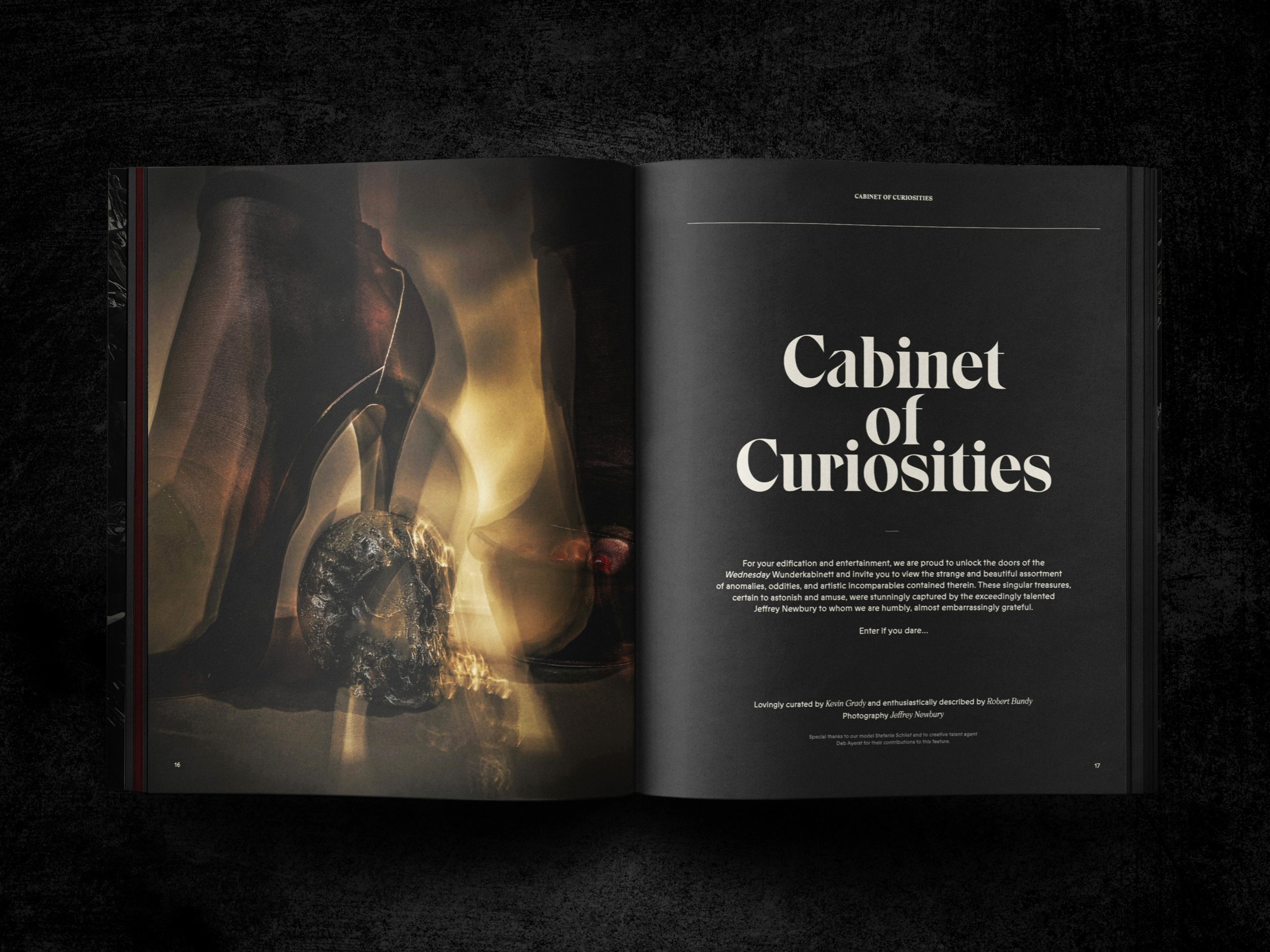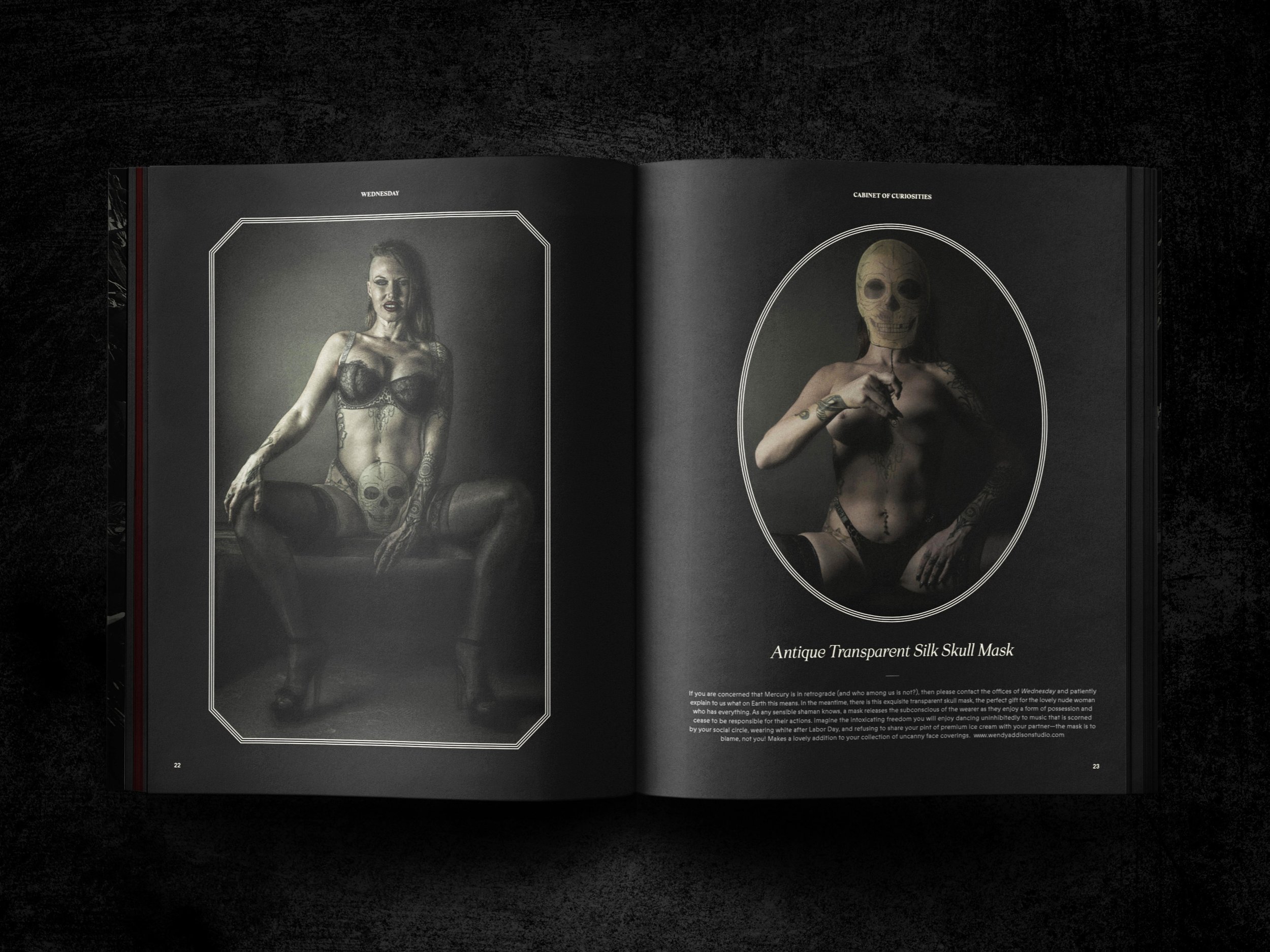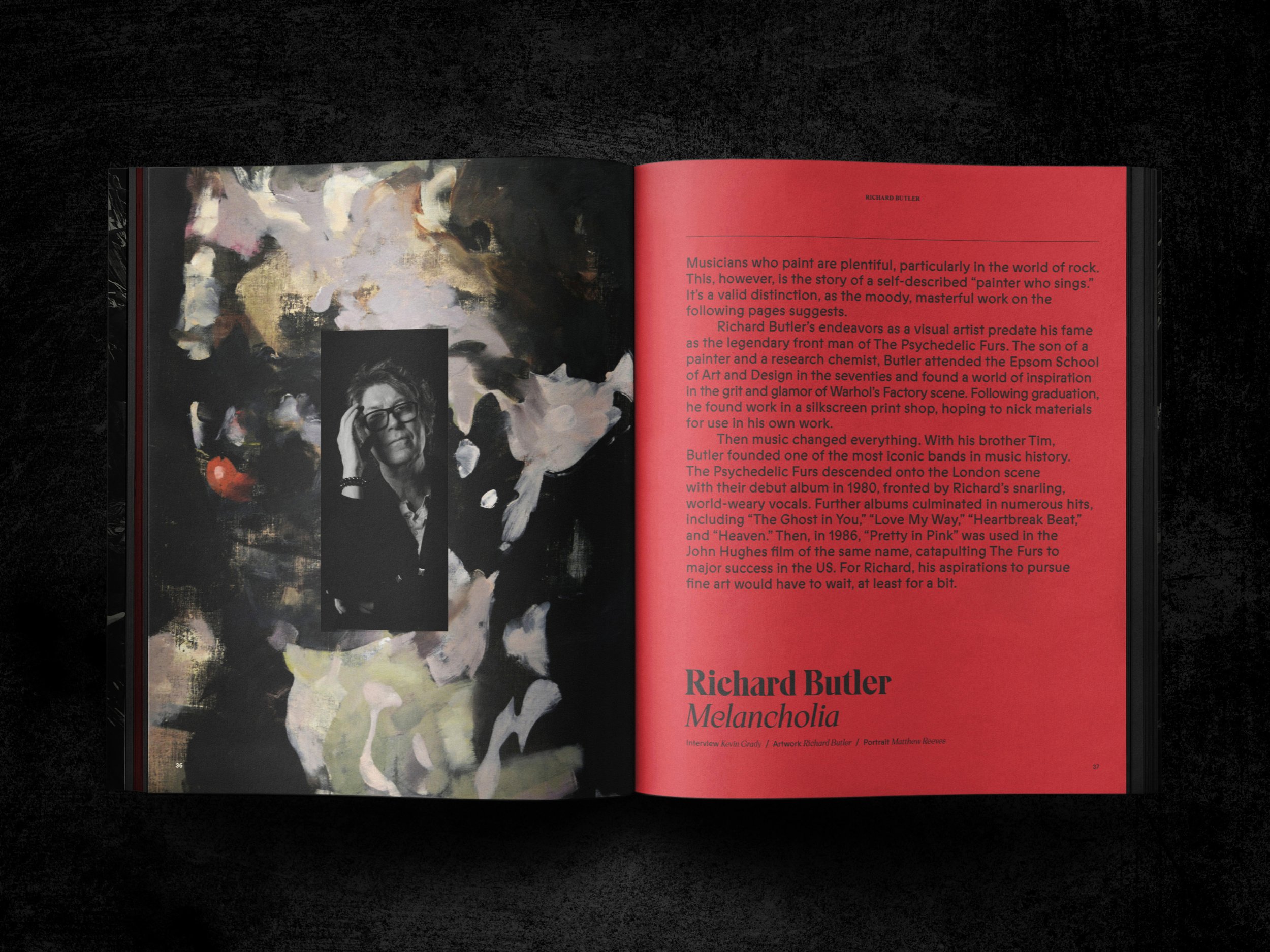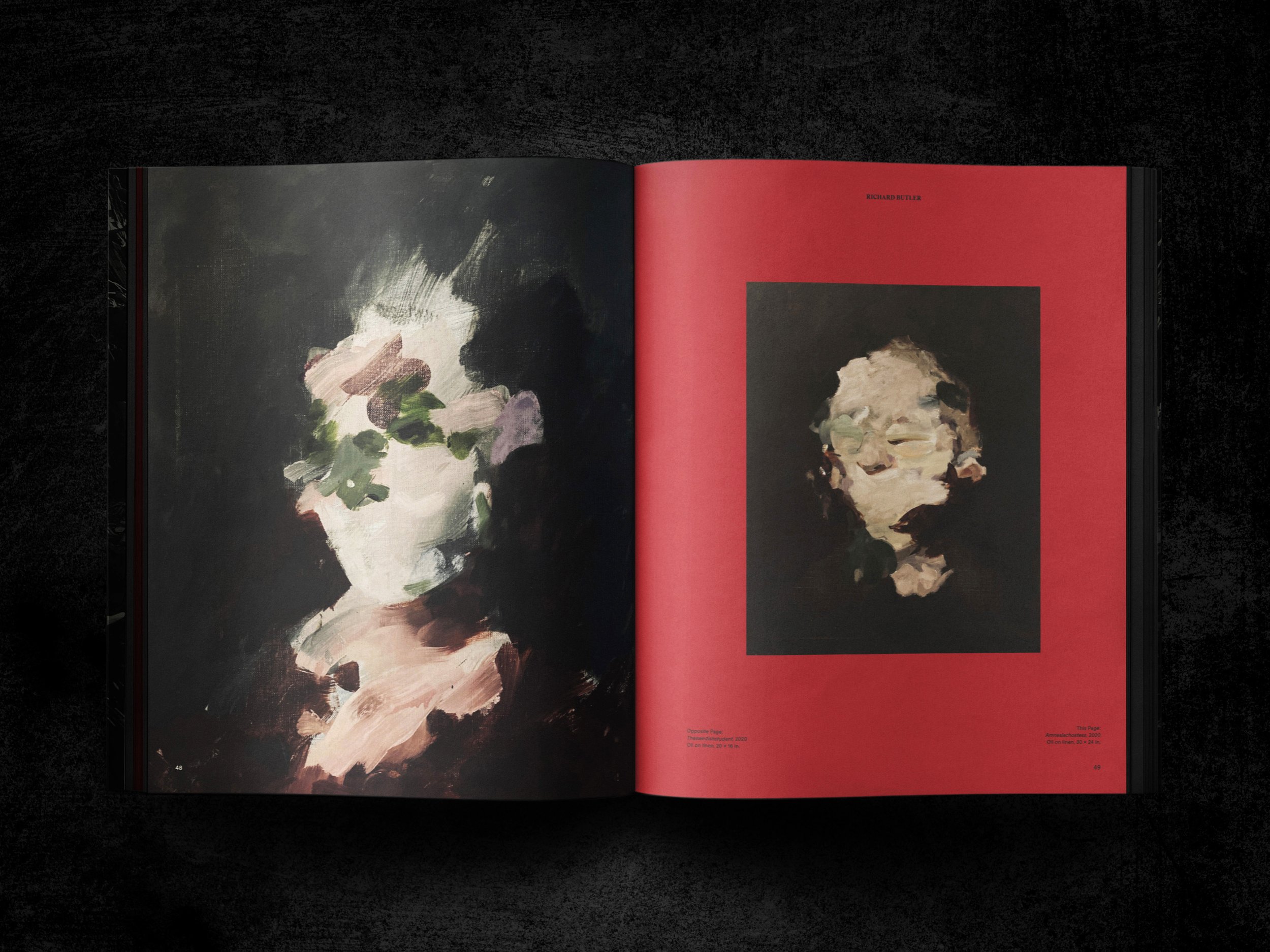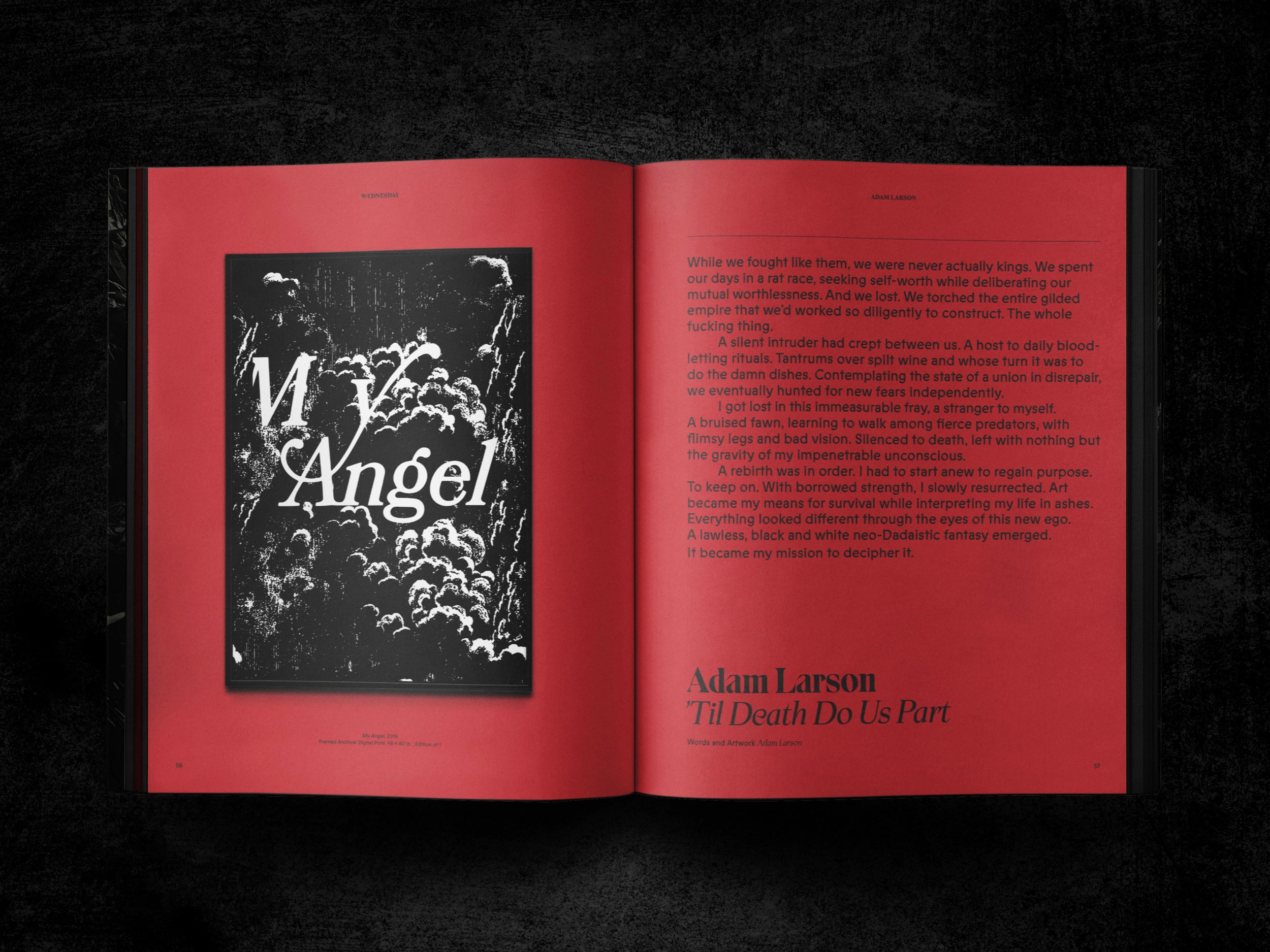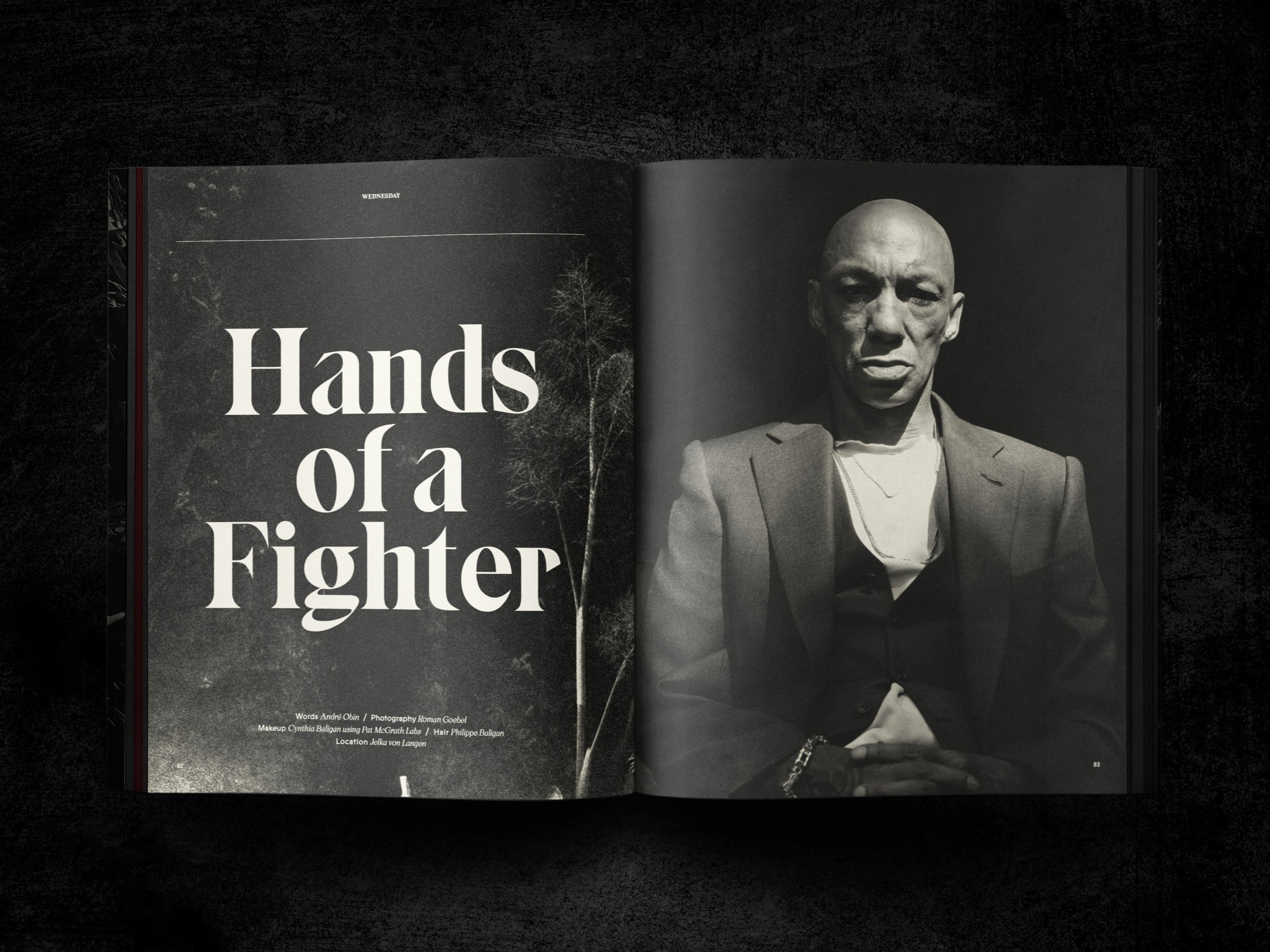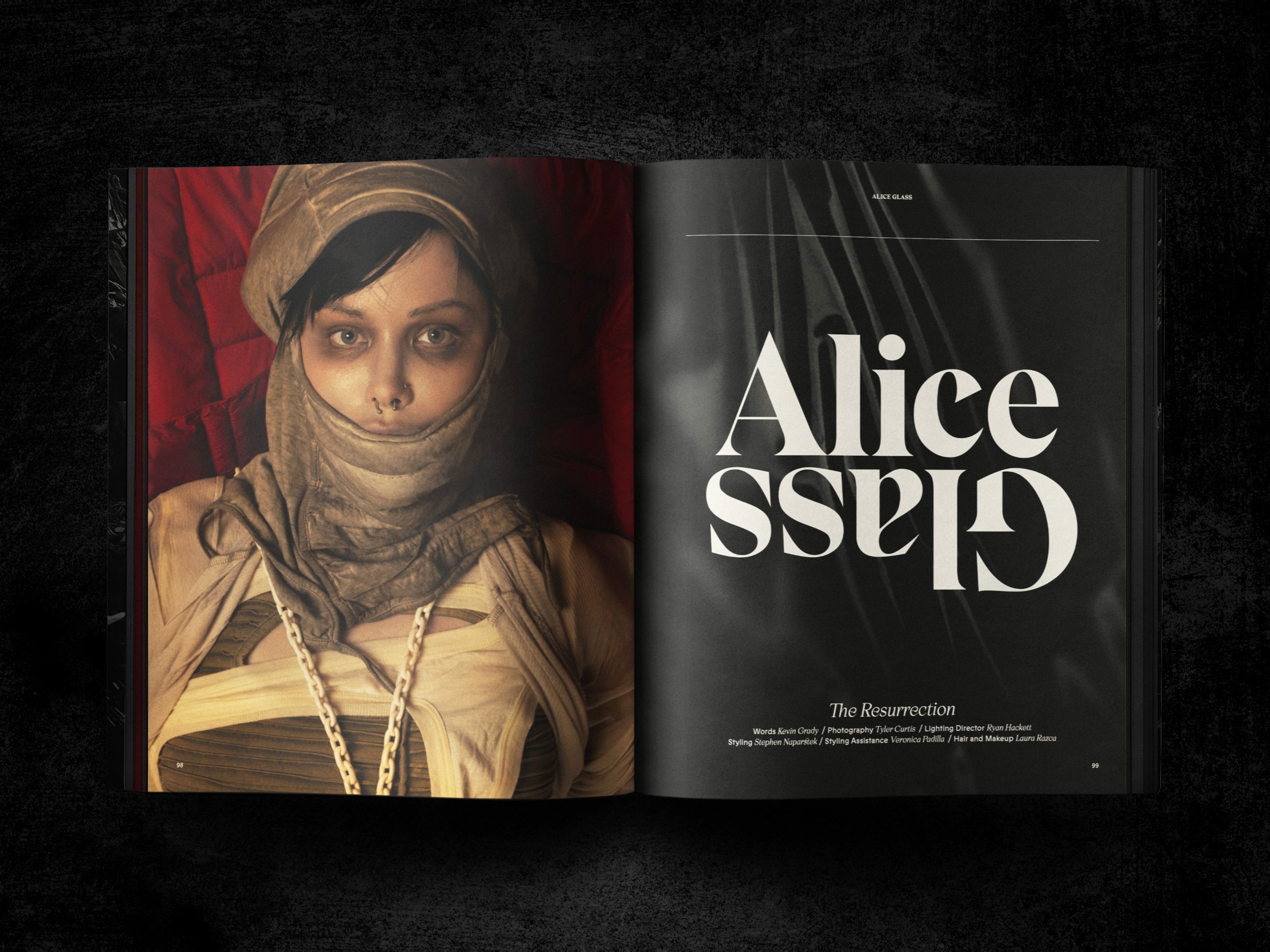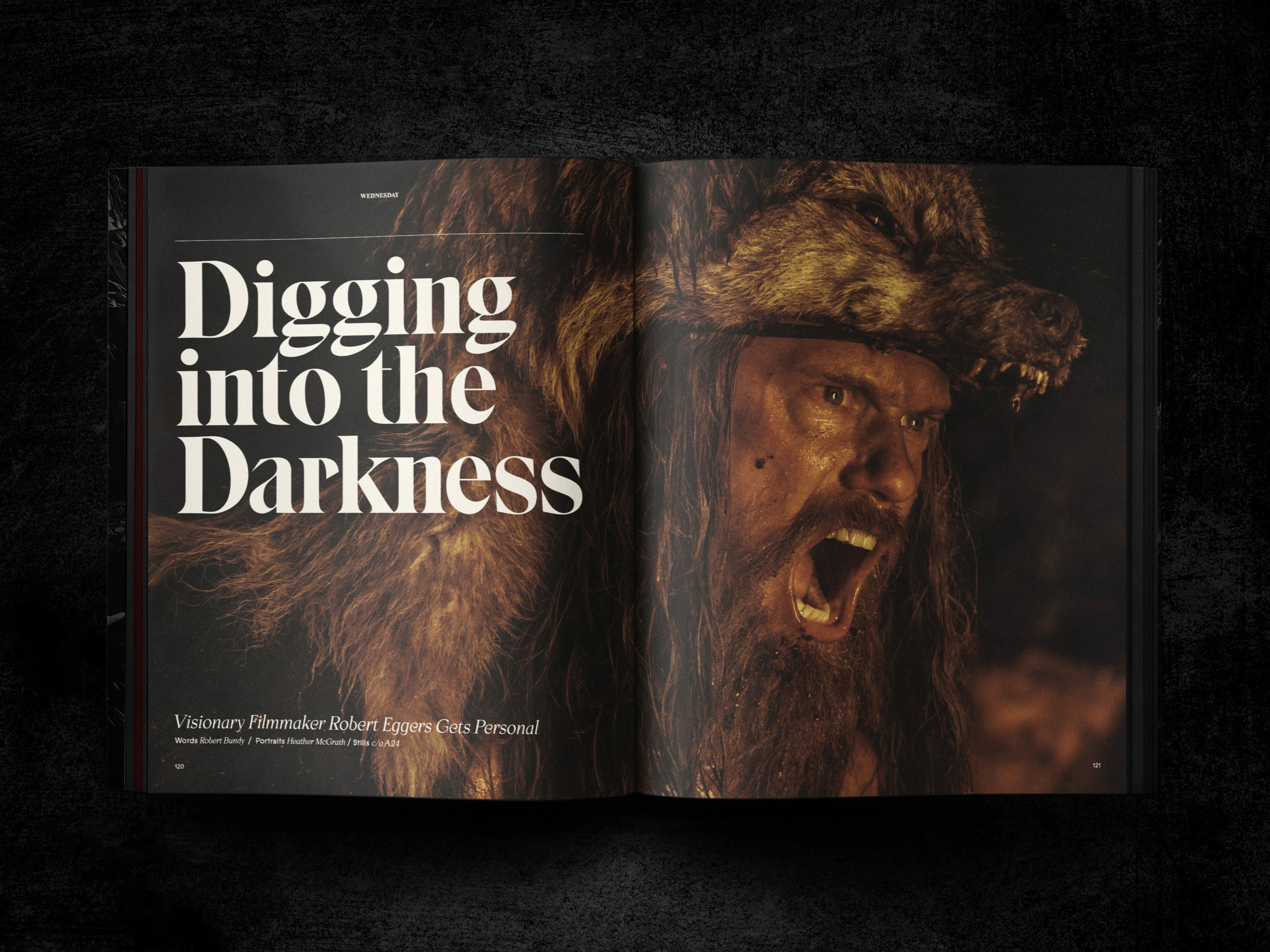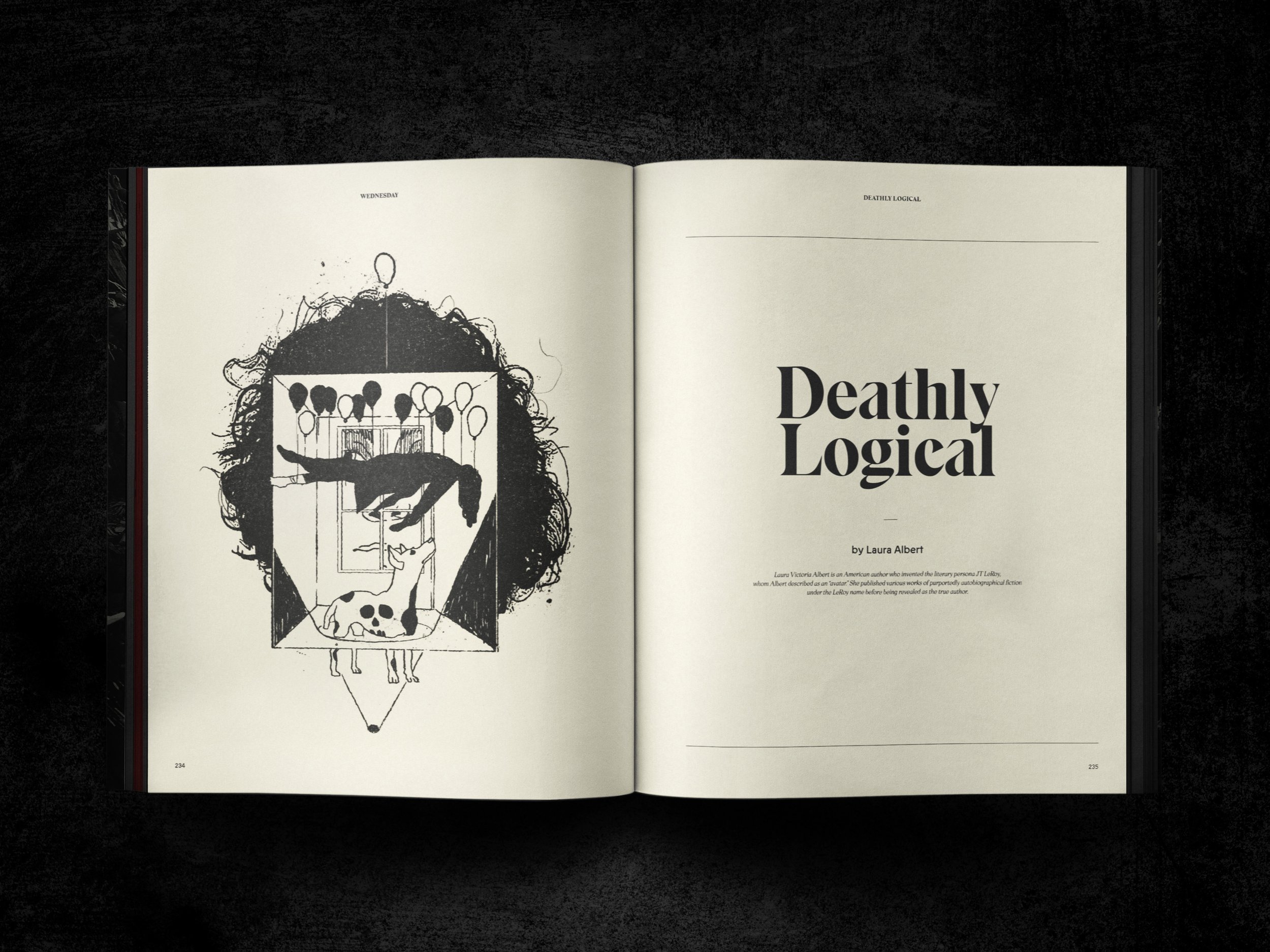The Dark Art of Magazining
Wednesday is a new magazine they call “The Bible of Dark Culture.” By Steven Heller
ORIGINALLY PUBLISHED IN THE DAILY HELLER / PRINT MAGAZINE
What is “Dark Culture”? When you see this new magazine, you’ll understand. It is a journal of that which “has been with us ever since we first learned to make fire.” An experiment in publishing, Wednesday is a storehouse of art and words, thick with content. Holding it is an experience. I asked editor-in-chief and creative director Kevin Grady to tell me about this new magazine in an age when print is supposed to be dead.
• • •
Steven Heller: Wednesday is quite an impressive magazine in its heft, design, and editorial content. I’m curious about the name and subtitle. What does Wednesday refer to? And why is this mag “Pertaining to Dark Culture”?
Kevin Grady: The name Wednesday references a verse from an English nursery rhyme from 1838 called “Monday’s Child,” which says, “Wednesday’s child is full of woe.” This reference was also the inspiration for Charles Addams’ Wednesday character in his Addams Family cartoons. We felt the name was an appropriate and evocative title for the project.
The magazine itself was created to explore darkness as a catalyst for creativity in music, art, film, fashion, literature and beyond. Darkness is having a moment in our pop cultural landscape, extending well beyond Goth. Perhaps it’s because we’re living in such dire times, but from fashion to [a quote] from artist Gerhard Richter that says “art is the highest form of hope,” a sentiment we really agree with, we see the artistic expressions documented in Wednesday as inherently positive, a sort of light in the night.
Steven Heller: The reference to Edward Gorey in the founder’s letter suggests a sense of lugubrious satire. Is this the intent of the magazine, to make the dark side a little lighter?
Kevin Grady: Absolutely—it’s like taking lemons and making lemonade. There’s a bit of gallows humor in the mix: When things seem bleak or hopeless, sometimes all you can do is laugh. It’s empowering in a way.
Steven Heller: Why publish a magazine, even a fairly exotic thematic one, at this time in the digital age?
Kevin Grady: Digital expressions continue to underwhelm me on the whole—I crave tangible expressions of creativity. I think lots of people can relate to that, hence the renewed popularity of vinyl, for example. And as we reference Wednesday as “The Bible of Dark Culture,” we wanted the book itself to be hefty, like an actual bible. The texture and blind embossing on the cover also invite a more sensual interaction with the magazine than you’d have if it were all digital.
ISteven Heller: am not sure how to categorize Wednesday. What do you say? Is it fashion-literary-art? Is it cult? Where does it sit on the magazine rack?
Kevin Grady: We see it as what you might expect if Edgar Allan Poe was brought back to life and guest-edited an issue of Kinfolk. In a way, it’s a lifestyle magazine, like many others that focus primarily on art, music and fashion, only through a dark lens. It’s also being distributed by Gingko Press as a book, so it’s not actually appearing in a magazine rack setting in most instances.
“We see the artistic expressions documented in Wednesday as inherently positive, a sort of light in the night.”
Steven Heller: What is your mandate as editor-in-chief, and how does that translate to your contributors?
Kevin Grady: Wednesday follows two previous publications that I founded, GUM (with Colin Metcalf) and Lemon. My intention now is quite similar to what it was then—to create compelling experiences in print. When I open up most magazines, I’m usually disappointed. Many follow conventions that are quite predictable.
With Lemon, we were able to collaborate with such icons as David Bowie and Daft Punk, based largely on the uniqueness of our approach and our expression. They sensed we were making Lemon purely for the love of it, a true passion project. Wednesday’s contributors are motivated by the same or similar aspirations.
I would like Wednesday to become a brand. In addition to the annual book, my collaborators and I would like to create products—scented candles, fragrances, apparel, perhaps our own absinthe—all building on the theme. Potentially it could expand into music as well.
Steven Heller: Who comprises your ideal audience?
Kevin Grady: I’ve joked that Wednesday is a magazine for mortals. Which is a pretty broad audience! But it’s true, we all have to grapple with our finite nature, and this is at the core of so much of Wednesday’s content. People who identity with Goth culture certainly have been quick to appreciate Wednesday, but the interest extends beyond that initial core. Almost everyone loves a good ghost story, regardless of demographics.
Most of our writers are quite mature as well, so there’s a lot of life experience packed in our pages. One story, by head writer Robert Bundy, is particularly poignant and involves grappling with the dementia and death of a loved one. Another feature, by Wednesday creative director Adam Larson, presents art he made following a painful breakup. People of all backgrounds can relate to topics like this.
Steven Heller: You call this “The New Bible of Dark Culture.” I admit I am not familiar with any of the contributors or the work included, other than Aubrey Beardsley, who represents an older dark culture, and Richard Brautigan. Where do you draw your content from?
Kevin Grady: There is a very broad subculture to draw inspiration from. It perhaps starts with musical luminaries such as The Cure, Joy Division and Depeche Mode and extends into the work of contemporary fashion designers like Rick Owens and Jun Takahashi. There’s a renaissance of original, intelligent horror films like A24’s Hereditary and Midsommar, and no end of fine artists who delve into morbid content. Inspiration can be found almost everywhere.
Steven Heller: How do you plan to keep an ambitious and presumably costly work such as this sustainable?
Kevin Grady: By not quitting our day jobs! We’re prepared to grow this organically over time, as an extension of the creative work we do professionally. So there’s less of a “make or break” aspect to it than there would be if we were trying to make a living from it. That’s pretty liberating. There’s still a lot we need to figure out, but it helps that we’re an annual as opposed to a monthly publication.
—
©2024 PRINT MAGAZINE
Steven Heller has written for PRINT since the 1980s. He is co-chair of SVA MFA Designer as Entrepreneur. The author, co-author and editor of over 200 books on design and popular culture, Heller is also the recipient of the Smithsonian Institution National Design Award for “Design Mind,” the AIGA Medal for Lifetime Achievement and other honors. He was a senior art director at The New York Times for 33 years and a writer of obituaries and book review columnist for the newspaper, as well. His memoir, Growing Up Underground (Princeton Architectural Press) was published in 2022. Some of his recent essays are collected in For the Love of Design (Allworth Press). He is also an editor-at-large and cohost of the Print Is Dead (Long Live Print) podcast. His interviews include designer Bob Ciano (Ep24) and illustrator Brad Holland (Ep05).



